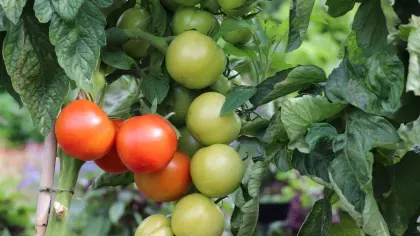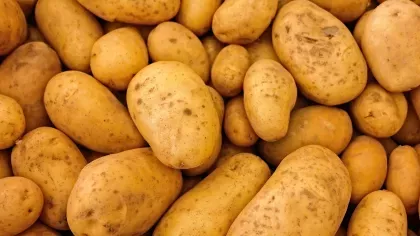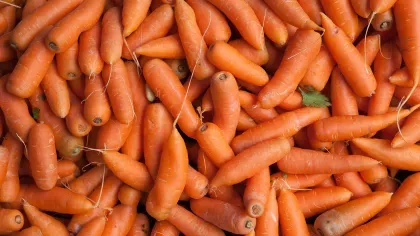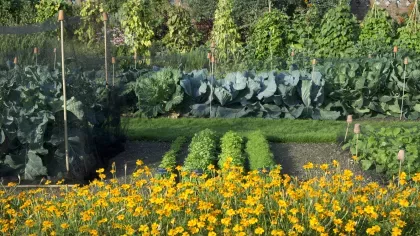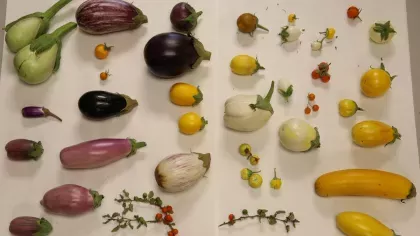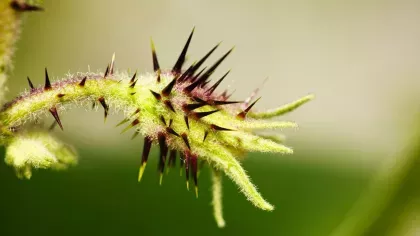
Aubergine
On this page
First domesticated in India, where it claims the title ‘king of vegetables’, aubergine is one of the top ten produced crops in the world.
The large berries of the aubergine (called eggplant in North America and Australia) don’t have a strong taste, but are popular due to their flavour-absorbing flesh.
Aubergine’s scientific name, melongena, comes from the fruit’s old name ‘mela insane’, which literally translates to ‘mad apple’.
Aubergine belongs to the nightshade family, Solanaceae, which also includes tomato (Solanum lycopersicum), potato (Solanum tubersoum) and peppers (Capsicum annuum)
Plant description
Aubergine is a herbaceous perennial that grows up to 2 m tall with a root system descending deep into the ground. The stems and leaves are densely covered with hairs and prickles, depending on the variety. The leaves are arranged alternately along the stem, growing 3 to 25 cm long, with hairy edges. The main flowers are 3 to 4 cm in diameter and are mostly violet, but occasionally white. The fruit is a rounded fleshy berry, 2 to 35 cm long. The skin of the fruit is smooth and shiny, and the flesh is full of small seeds. Fruit colour is commonly purple, but can also be white, green, or black.
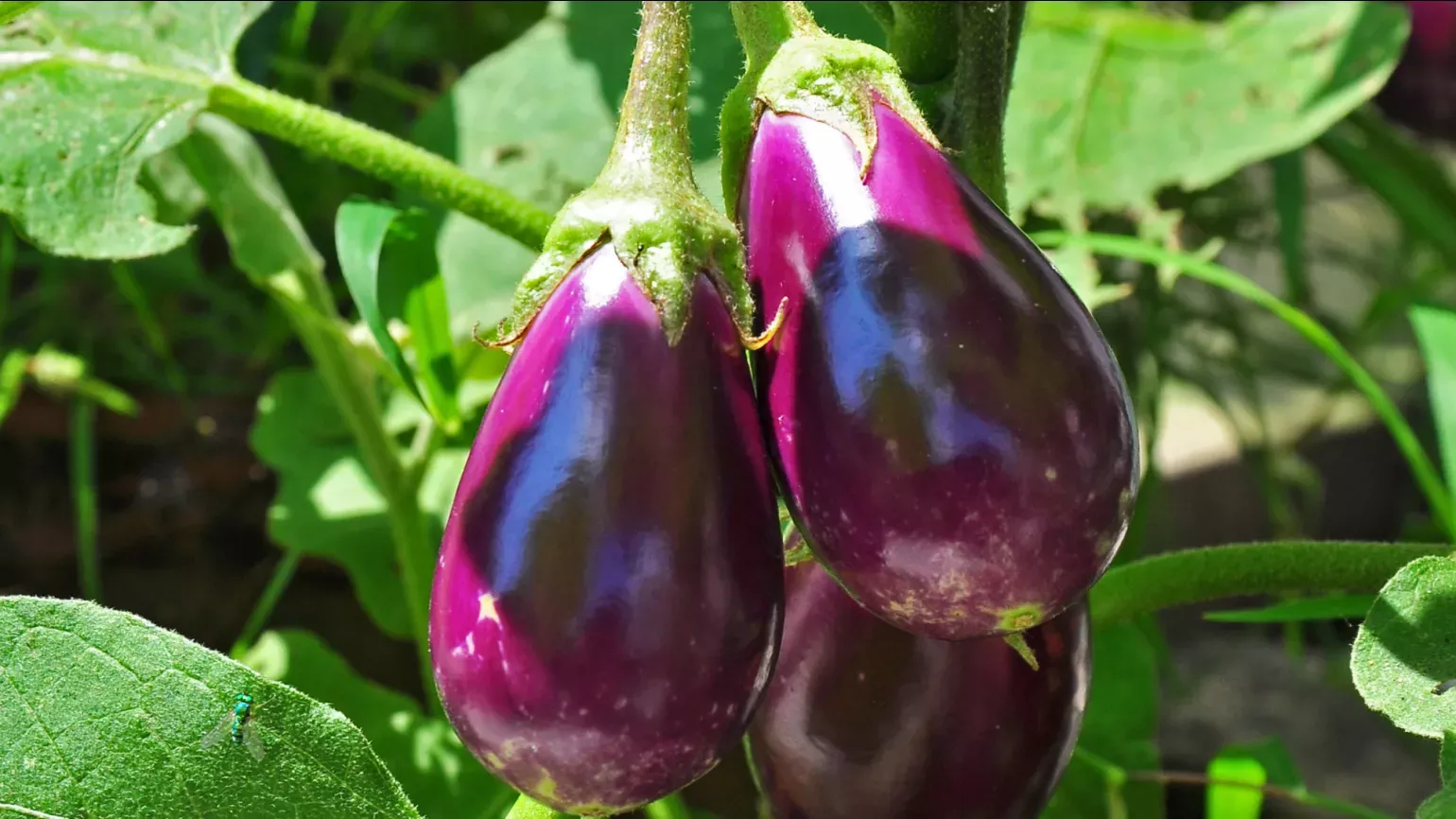


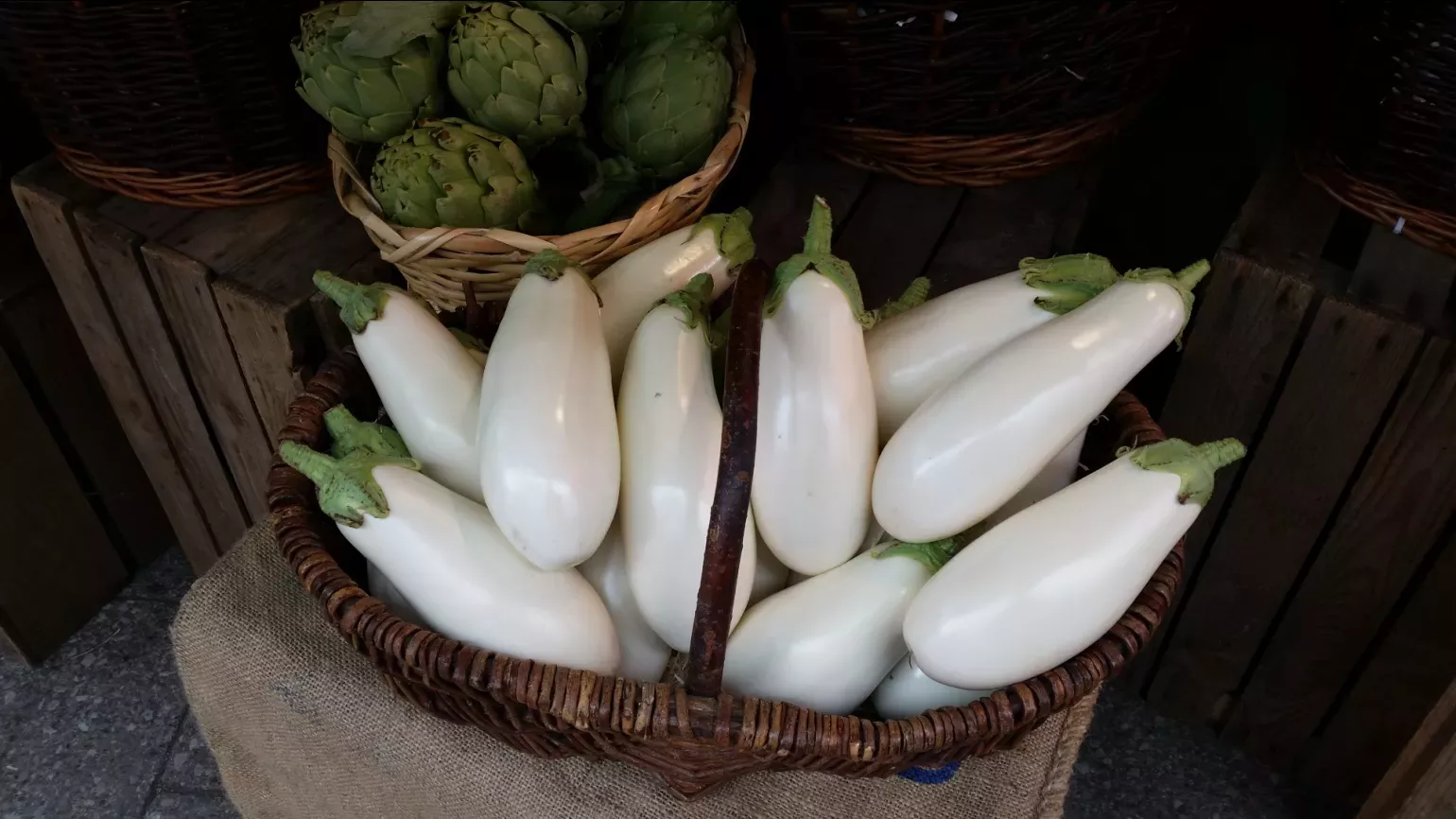
Plant uses
Food and drink
In French cuisine, aubergine is a key ingredient in stewed vegetable dish ratatouille.
In Greek cuisine, aubergine is fried and layered with meat and white sauce to make moussaka.
In Chinese cuisine, aubergines are deep fried, barbequed or roasted and eaten with rice and meat.
In Japanese cuisine, aubergine slices are grilled and served with a meat stuffing in a dish called hasamiyaki.
In Indian cuisine, aubergine is used in a wide variety of dishes, including chutneys, curries, sambar (a lentil stew) and baingan bharta (roasted, skinned, mashed and mixed with spices and tomatoes).
In Italian cuisine, aubergine is layered with cheese and tomato and baked to make parmigiana.
In Levantine cuisine, chopped, roasted aubergine is combined with olive oil, lemon juice and tahini to make baba ghanoush.
In Iranian cuisine, aubergine is used in a huge number of recipes, and is also pickled to produce torshi bademjan.
Did you know?
In North America and Australia, the aubergine is known as the eggplant, due to the white variety of the fruit resembling an egg during its early stages of development.
In 2020, the world produced over 56 million tonnes of aubergine, with nearly 65% of that production coming from China.
Where in the world?
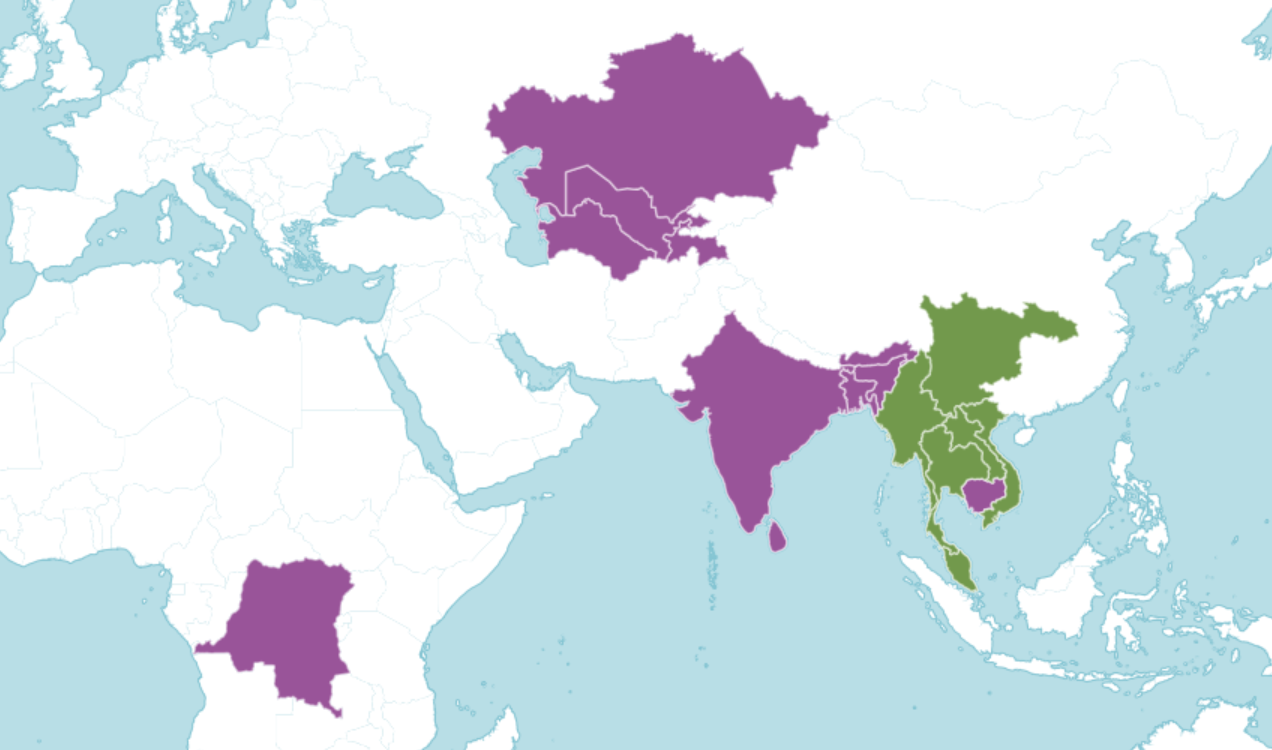
Aubergines thrive in warmer climates, but can also grow in temperate climates.
Find it in our gardens
Kew Gardens
A botanic garden in southwest London with the world’s most diverse living plant collection.
Location
View map of Kew GardensBest time to see
Our work
Solanum ruvu is a wild relative of aubergine now thought to be extinct in the wild. This rare, African, spiny aubergine was collected once as part of a general survey in 2000.
Unfortunately, by the time it was identified as a new species by Kew botanist Maria Vorontsova in 2010, its native habitat had been destroyed.
Attempts to recollect it were made in 2010 but the plant could not be found and is now considered to be extinct.
Many other crop wild relative species are under threat from habitat degradation, soil erosion and climate change. They are in vital need of conservation as they provide a much-needed bank of genetic diversity.
Through introducing crop wild relatives into traditional breeding programs, we can harness their genetic potential and cultivate more resilient crops that will feed rising human populations in a changing climate.
The Millennium Seed Bank and the Global Crop Diversity Trust engaged in a ten-year project, called 'Adapting Agriculture to Climate Change'. The project collected and prepared seeds from the wild relatives of 29 key food crops, including aubergine.
1.4 million seeds from the Solanum genus have been banked so far, from 24 species collected in 19 different countries.

